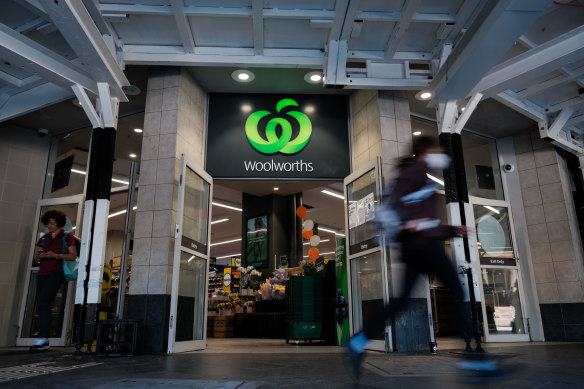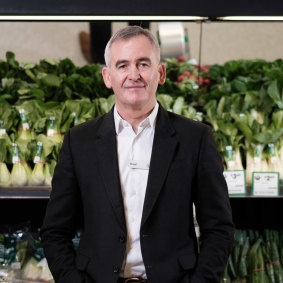Stratospheric food prices send shoppers scurrying for options
Food inflation is as extreme as it has been in living memory. It’s the perfect price storm – influenced by supply chain issues, elevated freight costs and extreme weather events. There is hope that the peak has passed, but supermarket chief executives are cautious with their predictions.
In November, the Reserve Bank called out grocery inflation at 9 per cent – the highest since 1983. In the three months from September to December both large supermarket chains Coles and Woolworths clocked food inflation rising 7.7 per cent.

While higher food prices have fed into robust sales revenues for the major supermarket chains, for the average four member household it’s an exercise in navigating the supermarket aisles to find value.
Supermarket executives will attest that there is rarely a time when all categories of food were experiencing inflation. But at the end of the last year, too much rain in some areas, not enough in others and hothouses starved of sunshine played havoc with fresh produce supplies. Meanwhile, supply chain issues accounted for disproportionate price hikes in packed goods as manufacturers sought to cover their own cost pressures by passing them on to the supermarkets.

The good news is that both the heads of Coles and Woolworths are predicting that peak food inflation may have passed. The bad news is that this doesn’t necessarily mean prices will come down – it just means they won’t rise at the same rate.
They note that the extreme freight costs experienced last year have started to ease, and the cost of some vegetables is actually coming down thanks to improved growing conditions.
When asked about his confidence in predicting food inflation had peaked, Woolworths chief executive Brad Banducci said, “Confident is not a word that’s easily used in the last three years.”
Hopeful is probably more appropriate.
“(We are) now cycling material inflation last year, so theoretically it should start trending down, and the early signs are that that is the case. He said the 8 per cent to 10 per cent food inflation last year should cycle down to mid to high single digit and that’s what we are seeing in the (past) six or seven weeks.”
Banducci and Coles’ outgoing boss Stephen Cain have both emphasised that food inflation was stickier than their modelling had factored in and wasn’t coming down as quickly as they had expected. For one thing, their modelling assumes there are no further extreme weather events that hit Australia’s growing areas.
Banducci said the never-ending increases in meat and lamb prices had not reversed but appear to have stabilised. However, both grocery giants noted this week that inflation has seeped into pork and chicken, which had been the cheaper alternatives to red meat.
And both have called out that dairy products, particularly milk, were experiencing higher prices. Meanwhile, certain vegetables like tomatoes, capsicum and broccoli are falling in price – and were called out as good value by both supermarkets.
And value is what the average shopper is looking for. Households have traded down their purchases. Both Coles and Woolworths experienced significant growth in their home brand products.
“It’s a very complex set of movements… it’s somewhat difficult to kind of predict where it goes. But I think what our expectation is, is that we are expecting cost pressures to remain, but we are expecting them to start to see some moderation,” Cain told investors on Tuesday.
Banducci puts inflation into perspective, noting that this extreme food inflation comes after ten years of mostly deflation.
“What we had (recently) was this perfect storm, every price went up for different reasons, but the one defining characteristic was they all went up.”
So, prices could start ticking down from here, provided there are no weather-related surprises, meat and milk are still likely to burn a whole in your wallet. But at least, pasta and rice are living up to their budget buster reputation.
Most Viewed in Business
Source: Thanks smh.com